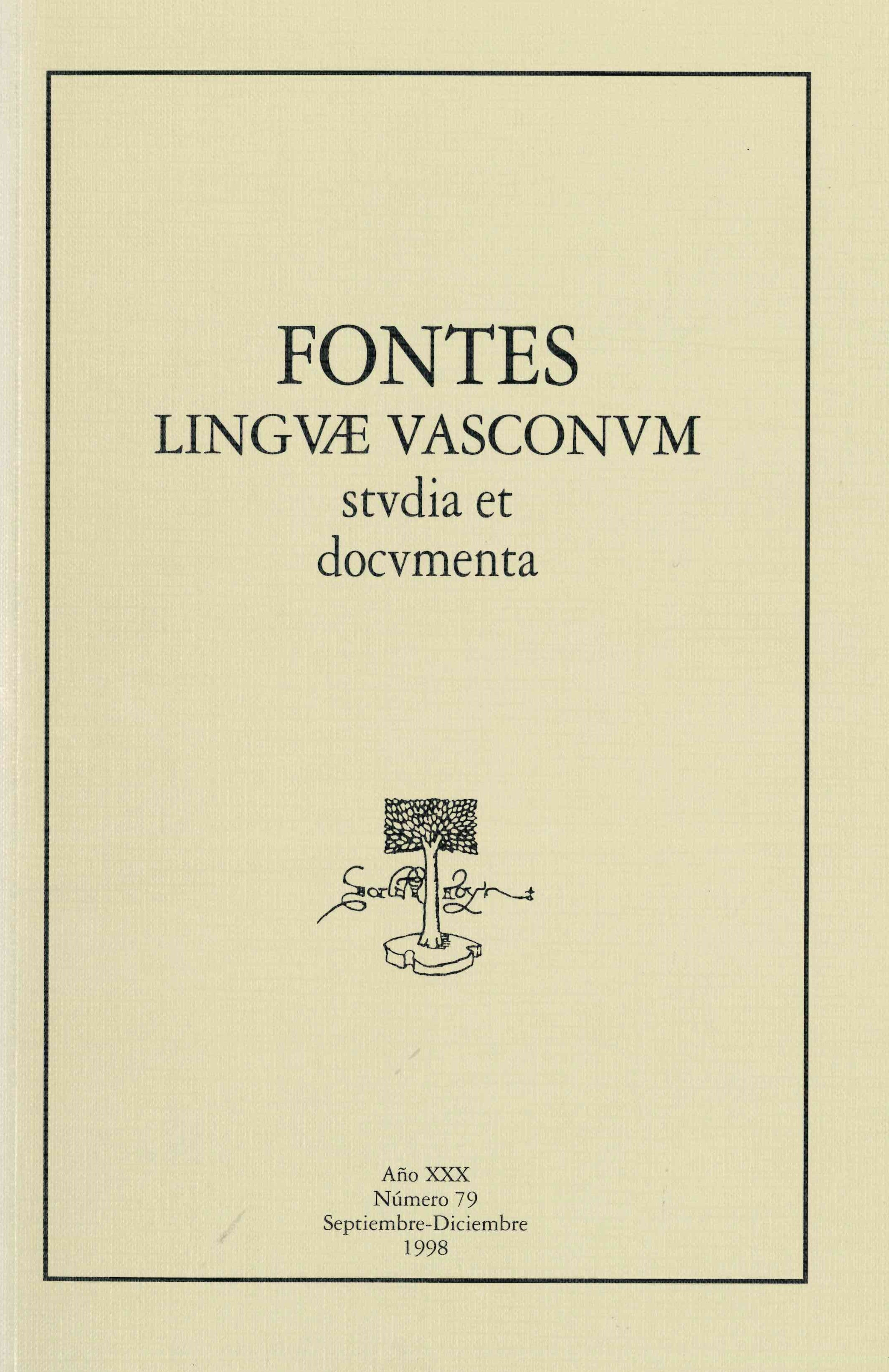A propósito del aoristo vasco
Abstract
In this article a defense is made of and varied evidence given to support the hypothesis that the verbal forms known as Aoristo, that is to say, the Synthetic Past (nentorren, nekarren) and the Past using *edin / *ezan-egin auxiliares (zahar nendin, lor nezan, jan negien), constituted, in a state of the language somewhat prior to the first known texts (a hypothetical state that we might denominate Medieval Basque), the commonest ways (if not the sole ways) of expressing the perfective past, or, to put it another way, an equivalent to the Castilian hice; while Basque's presentday perfective past (etorri nintzen, ekarri nuen, zahartu nintzen, lortu nuen, jan nuen) had, in Medieval Basque, a Pluperfect value (Castilian había hecho) and its later evolution gradually took over the role of the archaic perfective or Aoristo, before completely replacing it.
##about.statistics##
References
BYBEE, J., PERKINS, R., & PAGLIUCA, W. 1994. The evolution of grammar. Tense, Aspect and Modality in the languages of the world. University of Chicago Press.
COMRIE, B. 1976. Aspect. Cambridge University Press.
COMRIE, B. 1985. Tense. Cambridge University Press. https://doi.org/10.1017/CBO9781139165815
EUSKALTZAINDIA. 1987. Euskal Gramatika: Lehen Urratsak II (EGLU-II). Real Academia de la Lengua Vasca, Bilbao.
IRIGOIEN, A. 1985. En torno a la evolución y desarrollo del sistema verbal vasco. Bilbao.
LAKARRA, J.A. 1986. "Bizkaiera Zaharra gainerako euskalkien artean", ASJU XX, 639-681.
MITXELENA, L. 1972. "Léxico vasco y etimología". Reimpreso en: Palabras y Textos, Universidad del País Vasco, 1987. 337-348.
NEDJALKOV, V. (ed.). 1988. Typology of resultative constructions. John Benjamins, Amsterdam. https://doi.org/10.1075/tsl.12
Copyright (c) 1998 Gontzal Aldai

This work is licensed under a Creative Commons Attribution-NonCommercial 4.0 International License.







